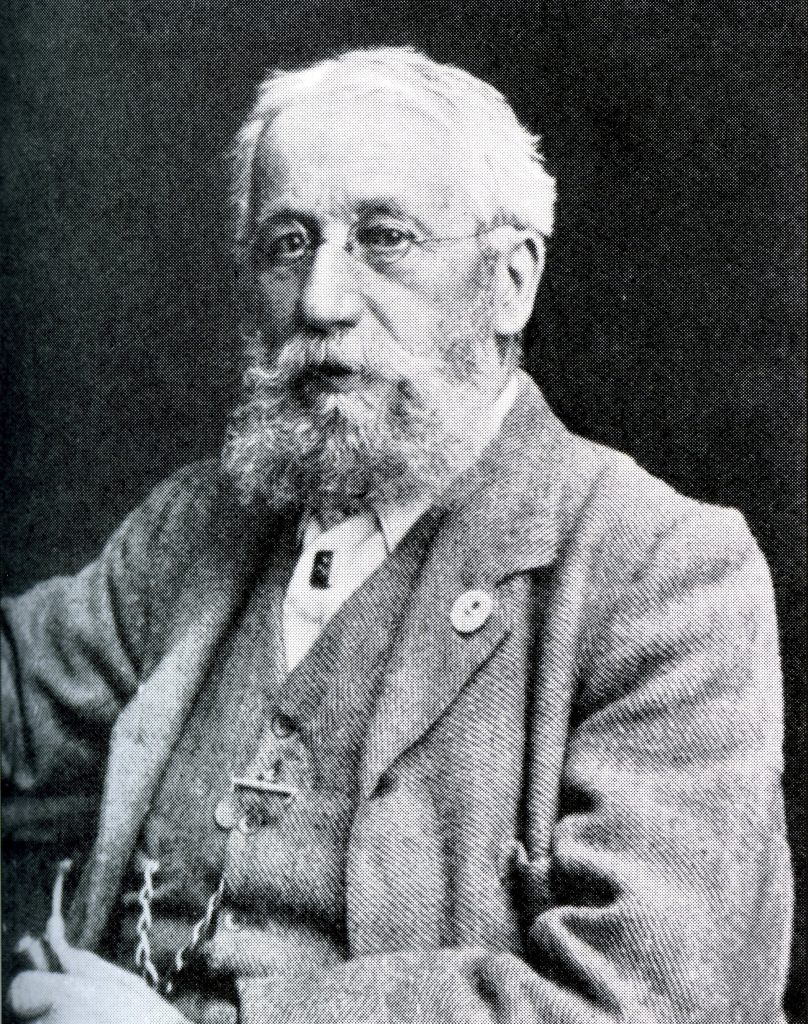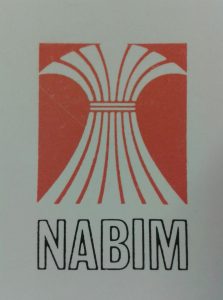Milling Associations: National Association of British and Irish Millers (nabim)

As roller machinery started to be introduced at the end of the 19th century, there were growing calls for a national organisation to offer ‘mutual advancement and protection’ and help solve disputes within the industry (Jones, p.138). The Miller was one publication that strongly advocated the creation of a national group, using regional groups already established as examples. These groups included the Glasgow and West of Scotland Millers’ Association, founded in 1860, and the Sheffield and Rotherham Millers’ Association, founded in 1877. Other nations, such as Germany and America, had national associations and the need for one in Britain was finally recognised. On 11 April 1878, a meeting was held at the Corn Exchange Hotel in Mark Lane with the express ‘purpose of forming a National Association of British and Irish Millers’ (Jones, p.137).

The first meeting of this Association was held on 27 April 1878 where Simeon Hadley was confirmed President and J. H. Chatterton (see image left) was appointed secretary. Hadley, the new President, commented that ‘The date of the inauguration of the Association may be one which will hereafter be renowned in the history of our trade’, a statement which would prove to be correct.
The general aims of this association were stated as being ‘The collection of information bearing upon all departments of the trade, technical, practical, and commercial, with a view to improve the quality of its products and increase the ratio of its profits’ (Jones, p.139). One measure they took to help improve the quality of flour was to create a Practical Committee ‘which was charged with making flour milling more scientific and less rule-of-thumb’ (Davies, p.10). They also ran training courses to assist with this modernisation of the industry. From 1883, the City and Guilds of London Institute ran a course in flour manufacture; in its first year there were over 30 course members. The milling industry in Britain was being successfully dragged into the 20th century, with nabim at the forefront.
By June 1879, the total membership of the association was 200. This membership was made up of a variety of individuals as membership was open to: ‘Master Millers in all parts of the United Kingdom…Milling Engineers, Millwrights, Millfurnishers, and others directly connected with the milling trade’ (Jones, p.139). nabim membership was not just the domain of millers, indeed, by 1881, milling engineers constituted seventeen members and by 1889, thirty-six members. Fourteen of these members came from three firms: Simon’s, Robinson’s and Harrison Carter, showing the dominance these engineers had in the early days of the industry.
However, whilst membership grew, the estimated number of mills actually represented by nabim was diminishing. In 1879 there were approximately 10,450 mills represented; 8,800 in 1887 and 8,500 in 1889. Although it was not the original intention, the group was becoming a place for large millers. Indeed, as Peter Mumford stated at a council meeting in 1890, ‘the idea had got abroad that the National Association of British and Irish millers was, above all, a large millers’ association…That was not the case. It was as well calculated to be useful to small as to large millers’ (Jones. p.144). Nevertheless, as the industry consolidated into these large firms, so did the membership of nabim.

As a way of sharing technical and practical information and innovations, nabim held annual conventions. These conventions were a place where issues could be discussed, for example in 1971 they discussed ‘Problems ahead for the millers’. The image (above) is from this convention showing the previous president, G. E. Pinches, the then current president, A. R. Heygate making his inaugural address, and the next president, R. N. Heslop. Also present are W. M. Vernon, honorary treasurer, and E. J. Hurle. The locations for these conferences were varied, predominantly taking place in Britain or Ireland, but with occasional meetings on mainland Europe too. This map plots the locations of conventions held from 1884-1989, excluding 1915-1919 and 1940-1946 when no meetings were held. The colours of the points on the map relate to the number of times a location was visited in this period: blue – 1; red – 2; yellow – 3; green – 4; orange – 5; purple – 6; brown – 7.
So in its early years, the National Association of British and Irish Millers established itself successfully. They implemented control and regulations on the industry whilst also supplying a space where research and discussion could take place.
World War I
The events of World War One allowed nabim to show what an important institution it was for the milling industry. Governmental control meant that the industry would have to negotiate with Governmental Ministers ‘over prices, profit margins, extraction rates, distribution and a host of other matters which in peacetime would be settled primarily in the market-place’ (Davies, p.12). nabim was the ideal mouthpiece for the milling industry in these negotiations.

This greater role led to many changes taking place in nabim. The membership increased and the subscription was raised. A full-time Secretary was appointed and the offices moved to Trinity Square from Mark Lane. Their objectives also changed and included the aim:
‘To give Government departments, the legislature and public bodies and others facilities for conferring with and ascertaining the views of persons engaged in the flour milling trade, as regards matters directly or indirectly affecting that trade.’ (Davies, p.12)
The aftermath of the war saw the continuation of wartime controls until 1921. After this, the issue of over-capacity re-emerged and competition between mills increased. Whilst this did not hurt the Association, it hurt the British milling industry so a solution had to be found. After encouraging the two big companies of Ranks and Spillers to meet, a meeting was held where the formation of the Millers’ Mutual Association (MMA) was agreed upon. This Association would have its own Board of Management and Secretary but would be located with nabim at the Trinity Square location. The MMA then introduced a production quota system and a rationalisation scheme which ultimately strengthened British millers and reduced the amount of imports.
During this inter-war period, nabim was still concerned with education and communication in the milling industry and founded a Young Millers Section in 1932. This group was ‘to induct young millers at management level into the industry, to help them learn as much as possible about the industry (as opposed to their individual mill) and enable them to get to know one another well’ (Davies, p.19). This group is still in existence today and according to one author, is ‘one of the reasons for the fraternity, continuity and cohesion that…distinguishes the British milling industry’ (Davies, p.19).
World War II
Once again the government took control of the flour mills during the Second World War and focused on producing the maximum amount of flour. nabim played a lesser role during this war and Committee meetings became less frequent, given logistical difficulties. Their offices at Trinity Square were destroyed during a bombing raid and they moved to Surbiton in south-west London. Once the war ended a new location was sought, and eventually found, on Arlington Street in St. James’ where it still is today.
The main issue the Association had to face post-war was to ‘glamorise’ bread again after the difficulties of rationing and connotations of austerity. A public relations officer was appointed in 1946 whilst advertising campaigns were started to make bread popular again. nabim’s role in the industry was constantly changing but it rose to meet the new challenges.
Up to Today

nabim still continues as an Association today. Their centenary year was celebrated in 1978 with the annual convention held in Monte Carlo and a Centenary Year President, Joseph MacArthur Rank, was elected to serve alongside the normal annually-elected President, S.G. Metcalfe.
One of the major changes the British milling industry went through after the war was joining the EEC (European Economic Community) in 1973. nabim led the call to have the import levy on Third Country wheat alleviated, something which was not achieved. Now with the decision to leave the European Union, nabim is once again the leading voice speaking for the British milling industry and producing information about how this decision will affect the industry. As a member of European Flour Millers (EFM) they also have good international links.
nabim is still involved in other initiatives started during their earlier days. This includes research, training and education. Training videos and e-resources that could not have even been imagined in 1878 have been produced and their seven module distance learning programme ‘has been the cornerstone of nabim’s training provision for many years’. They also work closely with the Health and Safety Executive to ensure the industry has the best health and safety standards.
So nabim survived through the early days of roller milling, the turbulent 20th century, including two World Wars and a changing milling industry, to today with questions over leaving the EU and future concerns of feeding the world. Through it all nabim has been a voice for the British milling industry and today, represents almost 100% of the industry.
Sources:
*nabim logo from cerealsevent.co.uk*
‘Gleneagles Convention: Problems ahead for the millers’, Milling, Vol. CLIII, No. 7, (7 July, 1971), pp.16-17
Davies, P.G., NABIM A Short History (1989).
UK Flour Milling Industry 2017, booklet produced by nabim.
